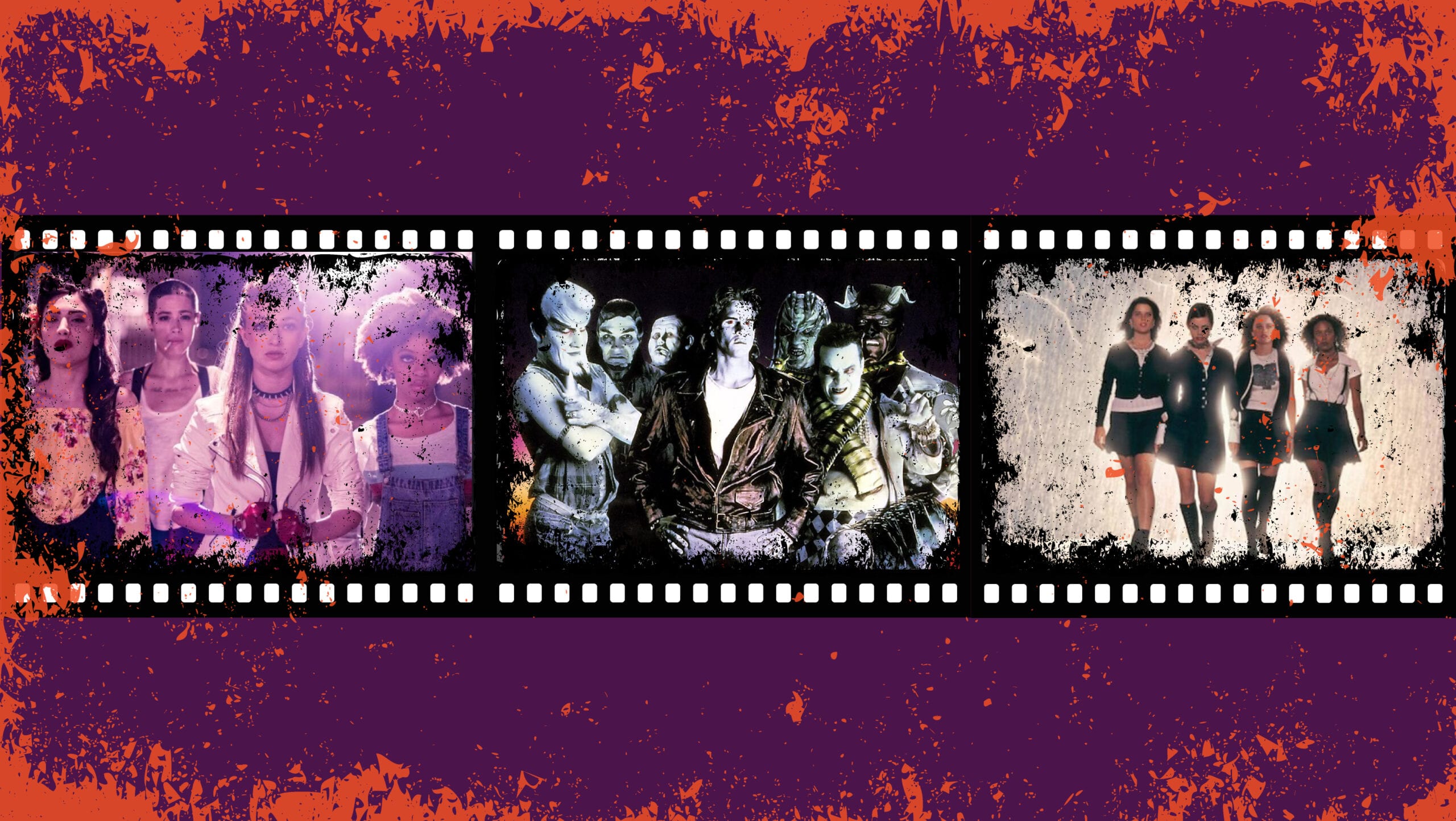During a pandemic, it’s not hard for the mind to wander to panicked, anxious, unclean and, most of all, contagious thoughts. If the Contagion streaming boom is any indication, we’re in for at least another month of mass-streaming zombie films and horror movies where the horror of our present moment is allowed to pale—just slightly—in comparison. Our current obsession with these films only makes sense: When the apocalypse you’ve been worrying about all your life finally hits, horror movies feel like something more than entertainment—they’re like emotional survival guides.
Luckily for all of us, there’s absolutely no shortage of hair-raising tales with explicitly LGBTQ2 subtext out there. After all, we queers invented the genre.
If you’re seeking the best in horror that hits especially close to home right now, here are some selections to start you off.
Nightbreed (1990)
Based on director and writer Clive Barker’s 1988 book Cabal, this film can best be described as a shitshow of the highest order. All the fantastically bad makeup gore we’ve come to expect from other Barker canon classics (Hellraiser, Candyman) is on magnificent display in this extremely long, very hard to follow masterpiece of horror. When Aaron (Craig Sheffer) is falsely accused of murder, he and his girlfriend Lori (Anne Bobby) must seek refuge in a majority-queer graveyard community known simply as “Midian.” There, they meet the Nightbreeds, a race of mildly vampiric club kids who “bite” others to infect them. In addition to being genuinely raucous and fun, this film is all over the place in a way that’s both messy and weirdly endearing. Did we mention David Cronenberg plays a masked serial killer?
The Craft (1996)
In this enduring classic that queers love, a stylish coven of witches forms to teach high school villains some hard lessons. Andrew Fleming’s The Craft has all the ‘90s elements we love to wax nostalgic about: miniskirts, teen Wiccanism and smarmy back talk on the order of, “Mister, we are the weirdos.” Nineties teen icons Fairuza Balk, Robin Tunney, Neve Campbell and Rachel True turn their outcast status into the ultimate power after discovering an occult book in a curiosity shop. Once they become full-fledged witches, however, things get a bit messy (not before they get insanely fun, of course): A rapist meets a gruesome end, and some racist classmates get served a dose of cold, hard justice. Made in that delicious period between Heathers and Jawbreaker, The Craft is a rare film about sexual assault, sexist double standards and female autonomy that doesn’t feel corporate or disingenuous. It might be a movie about teen witches, but it’s not glib or half-assed about the real problems of misogyny, racism and sexual abuse that its characters deal with. It’s also one of the few films about teen girls that actually operates from their point of view. Some see it as a lesbian parable; others as a fun feminist revenge film. I see it as one of the few movies from this period that takes teen girl friendships—and intimacy—seriously.
The Last Man on Earth (1964)
You may know Will Smith’s I Am Legend, but did you know that another adaptation of the eponymous post-apocalyptic novel exists? I’m here to tell that it does, and queer icon Vincent Price stars in it. Ubaldo Ragona and Sidney Salkow’s The Last Man on Earth is eerily reminiscent of COVID-19. The plot is simple: A man has managed to stay alive during a full-on zombie apocalypse—his wife and all his friends have been “turned.” Now, his life revolves around keeping the killers that surround him from getting him, too.
When night falls, the zombies inevitably come out, beckoning him like irresponsible COVID-19-deniers to “come out and play” with his neighbours. While the film is a bit slow-going, it paints an ominously similar portrait of how most people are living these days: Indoors, shut away from others, obsessively planning their next trip to the supermarket and terrified at the sight of people in the street. If you want to give yourself a break from the mundane horror of everyday life by watching a film about the mundane horror of a zombie apocalypse, The Last Man on Earth is for you.
Bit (2020)
With its gore and lesbian undertones, Brad Michael Elmore’s recently-released flick joins the ranks of earlier feminist creature features, like 2012’s Jack & Diane and 2007’s resplendent Teeth. But in Bit, the undertones are full-on overtones, as trans teen Laurel (brilliantly played by Nicole Maines) travels to Los Angeles for a bit of summer relief. What she finds there, however, is a gay girl gang of vampires with a taste for blood (and death, of course) led by Diana Hopper’s Duke, a fierce lesbian with an axe to grind. The girls aren’t just fighting for their lives by sucking blood out of the necks of L.A. fuccbois: They’re fighting to take away power from men in general. “They can’t handle it,” says Duke, and rightly so. With ’80s-inspired neon and some truly punchy dialogue, this throwback flick will make you heartily nostalgic for campy ’80s horror classics like A Nightmare on Elm Street and Friday the 13th.
Dracula (1931)
Listen, you may think you know the story of Dracula, and chances are you do know the story of Dracula, but revisiting Tod Browning’s 1931 version may open your eyes to some of the gayer elements of the tale. Exhibit A: Renfield (Dwight Frye), Dracula’s first on-screen victim, who in this version appears to have been more seduced than bitten by the blood-sucking Count in question. Some may say that the 1992 version, featuring a sexy Gary Oldman, a sexier Winona Ryder and sexiest Tom Waits as Renfield, is a bit campier than the original—I beg to disagree. Until you’ve seen the bizarrely sultry way Bela Lugosi’s Dracula looks at the men he’s trying to suck (on), you haven’t seen the Count in action. In this Dracula, it’s not about what the vampires get up to in the shadows: It’s about what happens during all those tantalizing fades-to-black.
Cat People (1942)
Another never-to-be-equaled oldie, Cat People is the enchanting tale of Irena (Simone Simon)—a Serbian woman and new bride who just can’t seem to stop turning into a cat when she gets a hard-on. In addition to being extremely relatable, this Val Lewton classic doubles as a fable about the perceived dangers of female sexuality. Made in the midst of World War II, Cat People reflects much of the paranoia and fear that was building up in America at the time. As much as it’s a very dated film about “womanly deception” and a fear of immigrants, it also shows quite a bit of compassion for its “othered” heroine. Cat People poses a very queer question: When we’re constantly betrayed by our bodies, how can we claim to have control over our deepest, most primal impulses? On closer inspection, it could almost pass as a story about dating while trans—when desire offers up a terrifying bodily transformation, dating itself becomes a horror.


 Why you can trust Xtra
Why you can trust Xtra


